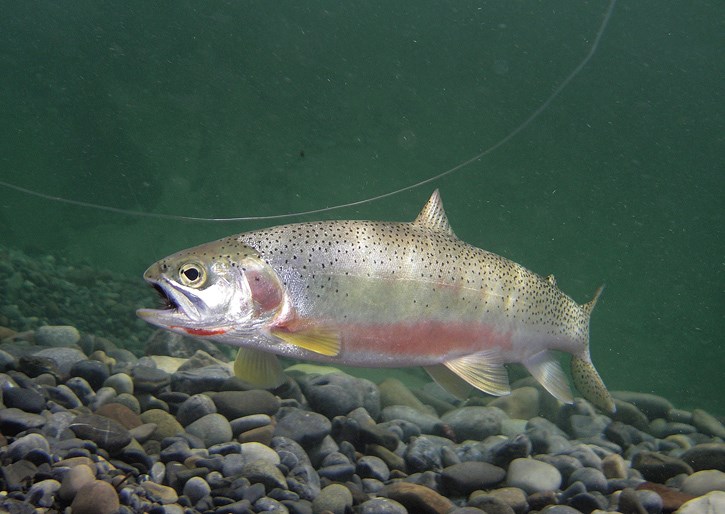Parks Canada is hoping to save wild trout in Banff National Park by killing off destructive competition.
The idea is to remove non-native brook trout in the Hidden Lake and Corral Creek drainage near Lake Louise to help with the recovery of native westslope cutthroat trout.
An environmental assessment for the fisheries restoration project – which is based on the successful template of the Devon Lakes project – is out for public comment until Thursday, Aug. 25.
“This type of aquatic work is pretty standard for trout recovery in western North America, where all different sub-species of trout are in peril,” said Shelley Humphries, a Parks Canada aquatics specialist.
“There’s a little urgency with this project because in the last 10 years we’ve seen the number of brook trout go from less than one per cent up to 10 per cent in the main part of the creek.”
Westslope cutthroat trout is one of the few trout species native to southwestern Alberta and British Columbia, including the mountain national parks of Waterton, Banff, Yoho and Kootenay.
The Committee on the Status of Endangered Wildlife in Canada (COSEWIC) has determined that pure populations of cutthroat trout in Alberta have become severely isolated for many reasons, including over fishing, habitat loss and competition and hybridization with introduced species.
There’s a process underway to list the Alberta population as threatened under Canada’s Species at Risk Act.
If approved, the first phase of the project would remove non-native brook trout from Hidden Lake and the upper reaches of Hidden Creek and Corral Creek above a waterfall.
The second part of the project would take wild and genetically pure westslope cutts from the middle and lower reaches of Corral Creek and put them into the lake and about four kilometres of stream.
Under the proposal, brook trout will be removed through various fishing methods, such as angling, electro-fishing, gill netting, seine nets and trap netting.
Parks plans to build a temporary fish barrier at the upper reach of Hidden Creek to prevent more non-native brookies from swimming into the lake at the same time they are trying to get rid of them.
It is hoped the work will begin later this summer, but it’s expected to take between three and five years to completely remove all of the brook trout from the lake.
Humphries said she hopes to invite local anglers and fishing guides, including those with the local chapter of Trout Unlimited, to help with the project.
“We want them to come and fish, but it would need to be done in a controlled way,” she said.
It is not known when brook trout were introduced into those water bodies, but Humphries said the non-native species took over the lake sometime between 1966 and 1972 and have since spread into the creek.
With the help of a genetics expert, Parks Canada has already undertaken non-lethal DNA sampling of 81westslope cutthroat along a four kilometre stretch of Corral Creek.
DNA evidence suggests some of the cutts in Corral Creek have bred with rainbow trout or Yellowstone cutthroat trout in the past, but at least half of them show no signs of interbreeding.
Humphries said genetic information will be used to determine which cutthroat will be moved to the lake, but indicated ongoing advancements in genetic fish research will help with this project.
If deeper research determines the genetics have been more compromised than initially thought, she said they would have to look to different drainage for a pure cutthroat trout source.
“We want to use genetically pure cutthroat, and we know we can do that based on some of our DNA research that’s already been done,” said Humphries.
Meanwhile, Parks Canada has also put out another environmental assessment for public review for a fisheries restoration project in the Upper Cascade River.
According to the assessment, native cutthroat trout are threatened by a population of rainbow trout in Rainbow Lake, near Forty Mile Pass.
Parks Canada wants to remove the rainbow trout from the lake and Rainbow Creek using gill nets and electro-shocking methods, and re-stock with westslope cutthroat trout, possibly from Sawback Lake.
The work is proposed to begin in the fall.




